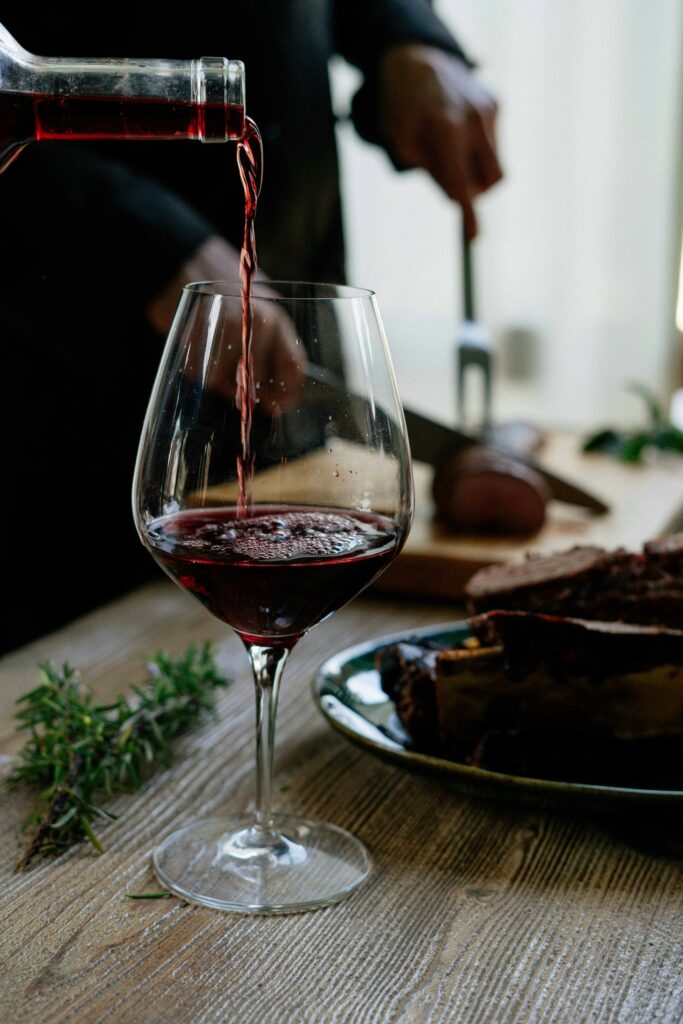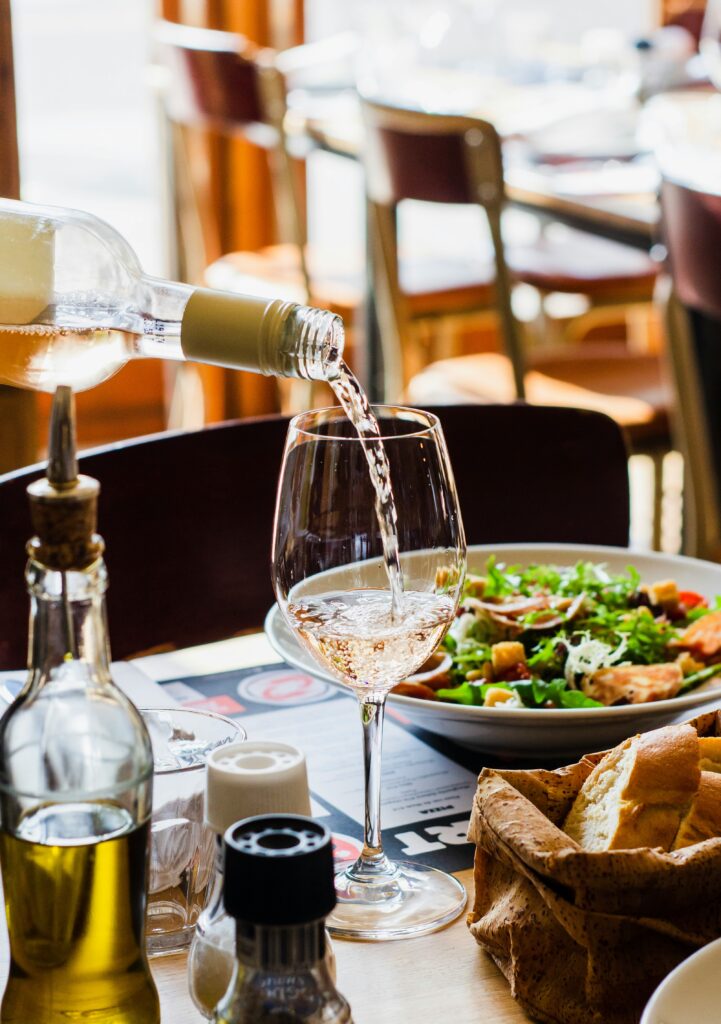The 12 Most Popular Italian Wines and Recommended Food Pairings

Learn about the most popular Italian wines and get tips on pairing them with foods based on region, weight, acidity and more.
The Most Popular Italian Red Wines

1. Sangiovese
Sangiovese is Italy’s most planted red grape variety and is most famously used in Chianti and Brunello di Montalcino. Wines made from Sangiovese tend to have notes of cherries, strawberries, tomato leaf, and herbs. Sangiovese pairs excellently with tomato-based pasta dishes, grilled meats, and aged cheeses.
2. Nebbiolo
Nebbiolo is responsible for the prestigious Barolo and Barbaresco wines of Piedmont. Wines made from Nebbiolo are characterized by rose petals, truffles, licorice, and tar aromas. Due to their complexity and tannin, Nebbiolo-based wines pair best with hearty stews, game meats, and aged cheeses.
3. Barbera
Barbera is another important red grape of Piedmont, producing wines with aromas of cherries, brambles, and spice. Barbera’s bright acidity makes it a natural pair for tomato sauces, pizza, and cured meats.
4. Nero d’Avola
Nero d’Avola is Sicily’s most important red grape, producing wines with black cherry, plum, spice, and chocolate notes. Nero d’Avola is a very versatile grape, pairing nicely with everything from pasta to grilled meats and hard cheeses.
Top White Wines From Italy

5. Pinot Grigio
Pinot Grigio is a very popular Italian white wine, especially in northern Italy. It is made from the Pinot Grigio grape, which produces a light, crisp wine with hints of citrus and stone fruit. Pinot Grigio pairs well with seafood, light pasta dishes, and salads. Some recommended Italian Pinot Grigios are Santa Margherita, Ca’ del Solo, and Kris.
6. Gavi
Gavi, made from the Cortese grape in the Piedmont region, is a refreshing, mineral-driven white wine. It has aromas of citrus blossoms, lime, and green apple with a crisp, acidic finish. Gavi is a perfect pairing for appetizers like bruschetta, fried seafood, and young cheeses. Look for Gavi di Gavi from producers like Banfi, Fontanafredda, and La Scolca.
7. Vermentino
Vermentino is a light, aromatic white wine grown predominantly in Sardinia and Tuscany. It has a fresh, floral bouquet with hints of lemon and herbs. On the palate, it is medium-bodied with bright acidity and a slight bitterness. Vermentino pairs nicely with seafood pasta, pesto, and tomato salads. Recommended Vermentinos are from producers such as Argiolas, Pala, and Sella & Mosca.
8. Fiano di Avellino
Fiano di Avellino is an elegant white wine from Campania made from the Fiano grape. It has an intense bouquet of honey, almond, and dried apricots with a rich, complex palate and long finish. Fiano di Avellino is a perfect match for roast chicken, veal, and aged cheeses. Top producers are Mastroberardino, Pietracupa, and Terredora di Paolo. This unique white wine deserves more recognition outside of Italy.
Must-Try Sparkling Wines of Italy

Sparkling wines are an important part of Italy’s winemaking tradition. Some of the most well-known Italian sparkling wines that you must try include:
9. Prosecco
Prosecco is a light, crisp sparkling wine made from Glera grapes in the Veneto and Friuli-Venezia Giulia wine regions. It has notes of green apple, pear, and honeysuckle. Enjoy Prosecco as an aperitif, with light appetizers, seafood, and creamy pasta dishes.
10. Franciacorta
Franciacorta is a traditional method sparkling wine, meaning it’s made in the same way as Champagne, from Chardonnay, Pinot Noir, and Pinot Blanc grapes. It’s aged longer, so Franciacorta tends to be more complex than Prosecco, with flavors of baked bread, citrus, and hazelnut. Enjoy Franciacorta as an aperitif or with aged cheeses, risotto, fish, and white meat.
11. Lambrusco
Lambrusco is a light, fruity, semi-sparkling red wine from Emilia-Romagna made from Lambrusco grapes. It has flavors of strawberries, raspberries, and violets. Chill Lambrusco and enjoy it with pizza, pasta, cured meats, and barbecue.
12. Moscato d’Asti
Moscato d’Asti is a sweet, fizzy wine from Piedmont made from Muscat Blanc à Petits Grains grapes. It has intense aromas of peach, apricot, and orange blossom. Moscato d’Asti is best served chilled as an aperitif or dessert wine and pairs nicely with fruit tarts, biscotti, and other light desserts.
Expert Tips for Pairing The Most Popular Italian Wines With Food
When pairing an Italian wine with food, consider the region both come from. Wines and foods from the same area are often natural partners, as they have evolved together. For example, a hearty Tuscan stew pairs deliciously with a bold Sangiovese from Tuscany. Lighter seafood pasta from Sicily is perfect with a crisp Grillo from the same island.
Furthermore, in general, match weights and flavors. Pair lighter wines with lighter foods, and heavier, more robust wines with heartier fare. Delicate Pinot Grigio pairs nicely with a simple salad, while a full-bodied Barolo can stand up to Ossobuco. Beyond weight, also consider how flavors interact: a fruity Sangiovese accentuates the flavors of tomato sauce.
Pay attention also to the acidity levels in both the wine and the food. High acid wines like Sangiovese can seem tart when paired with equally acidic tomato sauce. Low acid wines risk tasting flabby next to vinegar or lemon. For the best experience, match acidity levels or balance a high acid wine with a creamy, buttery or oil-based dish.
Consider preparation methods
The way you prepare a dish also influences the choice of wine. Grilled or roasted meats pair well with medium-bodied reds like Chianti. Braised or stewed meats are nicely complemented by heartier wines such as Brunello or Amarone. Fried foods are best with a crisp white like Pinot Grigio or Falanghina to cut through the grease. A round white like Gavi can enhance a creamy pasta sauce.
In general, white wines match lighter dishes, while bold red wines complement heartier fare. But Italian wines are very versatile and there are many possibilities for food and wine pairing. The key is to find combinations that you personally enjoy!






